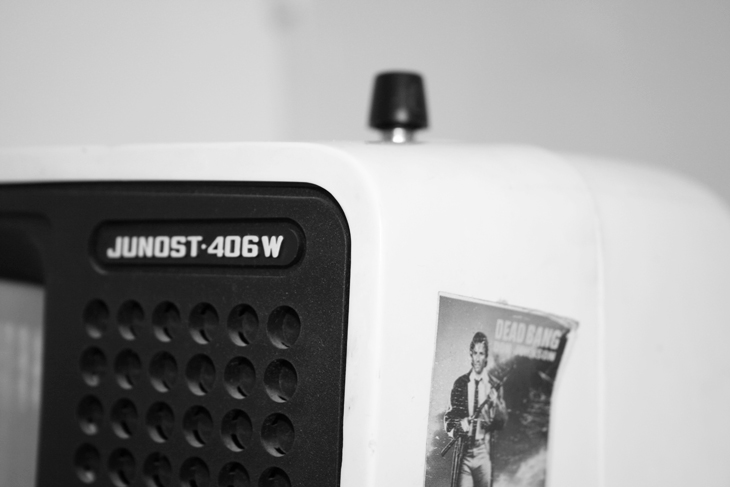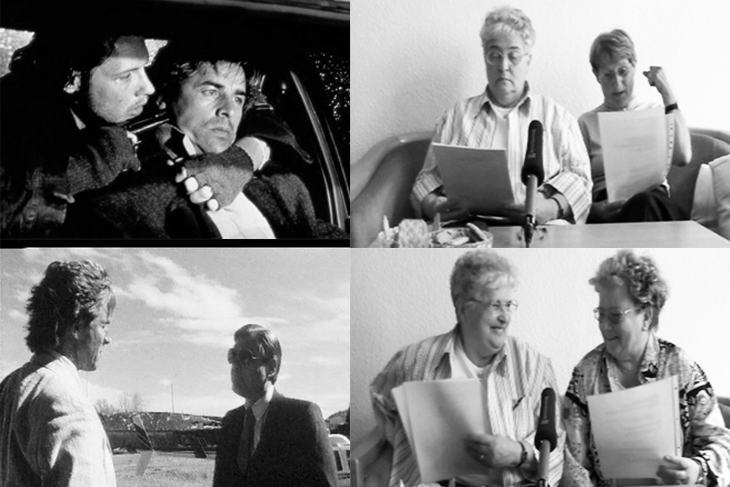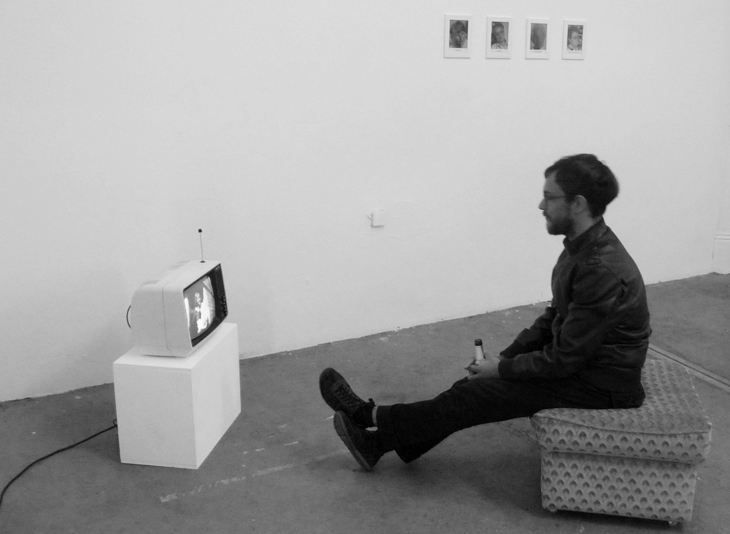Junost Bang
(2007)
Video Installation
Dur. 10 min, DV, sound
For the video installation Junost Bang Kerstin Honeit asked four older women from a senior club in former East Berlin – which was based close to the famous DEFA GDR dubbing studios – to re-dub the male characters of a Don Johnson b-movie called Dead Bang. To synchronise the speaking tempo of the women with the moving images of the chosen scenes the film had to be extremely slowed down. Besides the general media representation of gender clichés this piece deals especially with cultural-political changes after the reunification in East Germany.
The stimulus for Kerstin Honeit´s installation Junost Bang (2007) was finding a dumped Soviet era TV in the street. On the television was a faded sticker advertising the action thriller B-movie Dead Bang – one of the first Hollywood films which heralded the newly enforced cultural conformity of the freshly reunited Germany by being screened in cinemas in both the former East and West.
The juxtaposition of the Cyrillic text used by the manufacturers of the television set alongside the typography used in the title of the stereotypically American film functions a catalyst, offering us a document of time which exposes the clash of the declared “past” of East Germany with the undeniable present tense of the West. Honeit continues to work with these ideas of shifts in time and perspective through her choice of particular scenes from Dead Bang (starring Miami Vice´s Don Johnson in the lead role), that she then re-works and re-dubs referencing Adlershof and its history. Adlershof, on the outskirts of Berlin, was once the main production centre of East German television and film dubbing (from 1949 until 1990) and was the site of the first presentation of Junost Bang.
Instead of using people with voices one might expect in an American action movie, the artist asked four older women from the local Senior Citizens Club in Adlershof to re-dub the male characters of the film. Honeit then matched the film tempo to the older women´s speaking patterns, rather than the other way round as is normal in the film industry. The nature of dubbing – the “performance” of the screen actors´ bodies to extraneous voices is in this way laid bare. Instead of synchronicity, Honeit exposes the fissures between speech and voice, image and sound, as well as between fictional and real space and warps the assigned and perpetuated gender codes of conduct whilst introducing an unfamiliar way of looking at the clichéd action film genre.
Text: Maja Wismer
Translation: Mat Hand

Detail, Original JUNOST Monitor

Making of, Scenes of Dead Bang / Voice Artists

Installation, Show room Atelierhof Kreuzberg